Menu

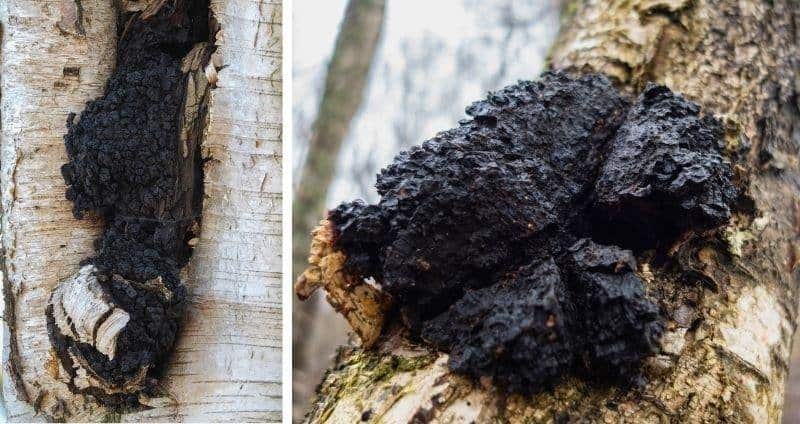
Chaga is an adaptogenic fungus that can have excellent health benefits for the skin and body. Although it’s commonly known as chaga mushroom, it’s not an actual mushroom. It’s a parasite that grows on certain hardwood trees, and you can easily identify chaga as it looks like a black, lumpy wood knot.
Want to learn what trees chaga mushrooms grow on? Read below to learn more about this health-boosting fungus and where to find it!
As a parasite, the chaga fungus (I. obliquus) has a one-sided relationship with its host tree. Its enzymes cause the simultaneous decay of cellulose, hemicellulose, and lignin (the three main biological constituents that make up the wood of trees) from the heartwood of its living host.
The breakdown of the heartwood weakens the tree’s infrastructure, allowing for the first traces of what we call “chaga” to protrude from within the tree.
Chaga can be considered a sterile conk or canker that forms on hardwood trees. This dark conk consists primarily of wood lignans and mycelium (the fibers that can be thought of as the fungal root structure).
Some call chaga mushrooms a sclerotium, but as they are not pure mycelium, like what is produced by poria (Wolfiporia extensa), polyporus (Polyporus umbellatus) or the tiger milk mushroom (Lignosus rhinocerus), this would be an incorrect characterization. In fact, one paper estimated chaga to be only around 10% mycelium (4).
Chaga grows in regions including Canada, Russia, Siberia, northeast China, northern areas of Europe and the United States. Its mushrooms are typically found on birch trees, aspen trees, and other trees in boreal forests.
Finland is a country where chaga grows abundantly. It was one of the first countries to try inoculating birch trees to encourage the growth of this fungus for harvesting.
Dried chaga can be used to make chaga tea, chaga tincture, and other chaga products.
Edible Mushroom? Although chaga mushrooms are considered edible, they have a bitter taste. Additionally, people consider wild-harvested chaga more pleasant tasting than cultivated chaga.
Geographically, I. obliquus grows on tree trunks of a variety of hardwood trees in cold habitats (45°N to 50°N) of North America, Eastern Europe, and Asia.
While chaga grows most commonly on birch trees, other species of trees commonly infected include (1):
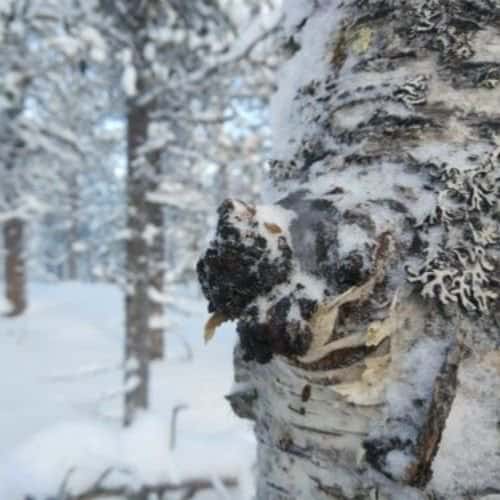
Harvesting Chaga: Proper chaga mushroom identification is crucial to ensure you’re getting genuine chaga and not false chaga (e.g., tree burls, black knots, and other fungi). If you don’t know how to distinguish chaga from other mushrooms, use these apps to help you harvest chaga safely and accurately.
Chaga growth is a process that very slowly affects its host, and the fungus can exceed 50 cm in diameter on old trees after many years (2).
The decay of the heartwood can last for another 30 to 80 years, although wild chaga can be harvested after 3-5 years of growth. When the host tree or a part of it dies, the actual mushroom (fruiting body) of chaga can appear.
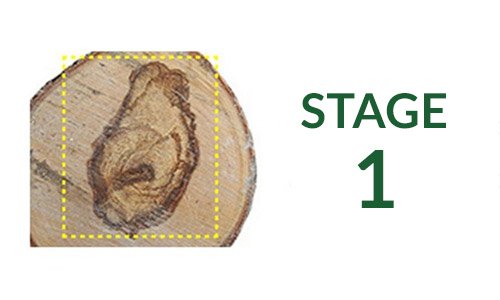
In the first stage of chaga mushroom growth, its spores have penetrated the birch tree, germinated, and have begun to consume the heartwood.
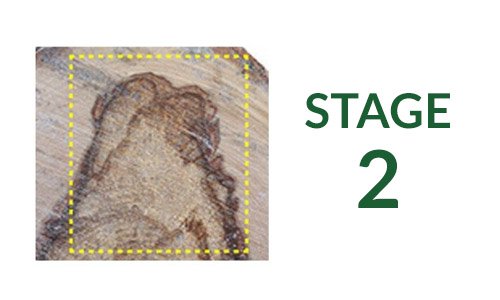
In the second stage of growth, the fungus will then push toward the exterior of the tree, consuming the wood as it goes.
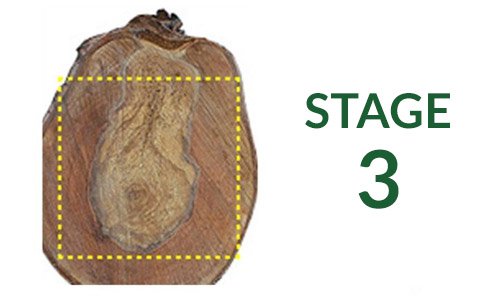
In its third stage of growth, the fungus will break through the bark and begin to form the canker of mycelium and wood lignins we call "chaga."
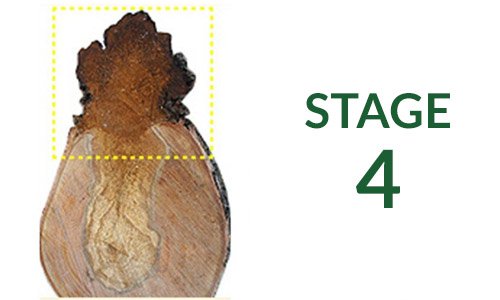
Over many years, the chaga mushroom grows much bigger and darker. It largely contains wood fiber & lignin, which house many of the nutrients found in the host tree.
For example, chaga that grows on birch trees will contain betulinic acid and its precursor, betulin. These triterpenes (natural plant compounds) have potent antioxidant, anti-ulcer, anti-gastritis, and immunomodulatory effects (3). Chaga is also nutrient-dense, containing vitamin D, potassium, zinc, and other vital vitamins and minerals.
Knowing what trees chaga grows on will help you locate and identify it. When you find this “black gold” parasitic fungus, you can then harvest part of it to make your own health-boosting chaga tea!
Experience the chaga’s benefits with ease by ordering our 100% organic real chaga extracts. Our supplements are third-party tested to ensure you get beneficial compounds such as beta-glucans whether you buy our Chaga Extracts supplements in powder or capsule form.
For more information on the health benefits of chaga, read our article, Chaga Mushroom Benefits: A Science, Health, & Supplement Guide.

Disclaimer: The information or products mentioned in this article are provided as information resources only, and are not to be used or relied on to diagnose, treat, cure, or prevent any disease. This information does not create any patient-doctor relationship, and should not be used as a substitute for professional diagnosis and treatment. The information is intended for health care professionals only. The statements made in this article have not been evaluated by the Food and Drug Administration. Any products mentioned are not intended to diagnose, treat, cure, or prevent any disease. The information in this article is intended for educational purposes. The information is not intended to replace medical advice offered by licensed medical physicians. Please consult your doctor or health practitioner for any medical advice.